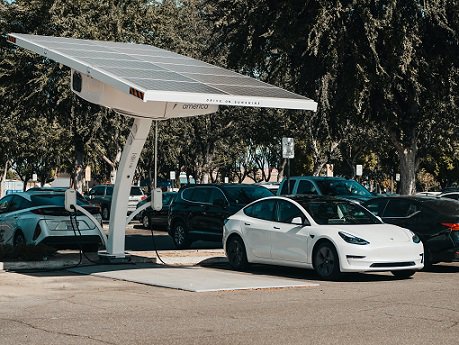Every country operates off a centralized power grid. With massive power generating facilities that traditionally ran off coal, oil, or nuclear power, electricity for homes and businesses was centralized across a large geographical area.
These large geographic parts of the centralized grid were interconnected as time went on, allowing electrical loads to be shifted to other parts of the grid as needed and during peak time. Long runs of high-tension cables moved power across states and regions. While loads could be shifted from area to region, outages also tended to affect large swaths of the population.
Renewables, Technology, and the Concept of Microgrids
As technology advanced, renewable energy became more efficient and could replace more significant portions of carbon-fired electrical generation. But including these new energy sources into the current system proved difficult.
Intermittency – the reality that the sun and wind are not always available when needed – was part of the problem. The other part was that traditional geographic grid structures proved inefficient to the ends of renewable infrastructure.
The concept of microgrids envisioned a discrete and much smaller footprint where a self-sufficient renewable energy system could operate. Combining sources such as wind and solar with other heat and power systems made it possible to service a small neighborhood, an industrial park, or a university campus.
As more of these systems came into being, they included battery storage and even charging stations for electric vehicles. Many were self-sufficient in operating but relied on the larger grid for peak support as needed. In addition to being cleaner, these systems leveraged IoT technology to manage and control the system for optimum efficiency.
Community Impacts of Microgrids
Microgrids are local systems – they operate for the benefit of a specific entity or a small region. Several key features define them:
- Locally Efficient – Large power grids can lose 8-15% efficiency over long distances. Microgrids allow energy consumption close to the source of generation.
- Self-Sufficiency – Microgrids can operate independently from the primary regional grid. This independence means they can remain in service at the time of outage over a region.
- Smart Grids – Microgrids tend to be smart grids. Following the concept of smart cities and smart factories, smart microgrids use IoT technology and advanced analytics and algorithms to optimize the system.
Benefits of Microgrids
The impacts listed above mean there are several benefits for communities and customers. They include:
- Cleaner, lower-cost energy
- Reduced strain and more stable regional grids
- Capability to tie directly into smart buildings, factories, and communities
Key Players in Customizable Microgrids
Many companies are innovating in the microgrid space. Here are a few examples of critical solutions providers:
- Advanced Microgrid Systems – Advanced Microgrids offers solutions for businesses and residential projects that allow users to operate with renewable feedstocks. They cater to small, medium, and large-sized enterprises and design systems that work for each client’s use case.
- Scale Microgrid Solutions – Scale Microgrids tackles the challenge of customizability. Each factory, business, residential area, or campus is different in its needs and peaks. Scale focuses its business on the fact that no two projects are alike.
- American Microgrid Solutions – American Microgrid Solutions has a strong presence in developing solutions and technology for resilience hubs. Resilience hubs mean hospitals, first responders, and other critical assets that can’t afford a power loss. Like the others, they focus on the unique requirements of each site.
Renewable Microgrid Solutions for Entrepreneurs and Business Innovation
Microgrids are one of the most significant examples of technology innovation today. The concept of a dedicated power solution for a small business would’ve been unheard of or extremely expensive until recently.
But entrepreneurs and new businesses starting to scale can now take advantage of the technology to commission their projects. They can also identify locations for placing their business within these microgrids to benefit the community through cleaner, sustainable power.
You don’t have to let the complexity of power generation become an intimidating exercise; you can take advantage of technologies such as microgrids to enhance and grow your business with confidence. The Henry Bernick Entrepreneurship Centre (HBEC) and Georgian College can help entrepreneurs understand and source solutions in technology that will lead to more sustainable growth.
With expertise across a wide range of industries, HBEC can show you how to leverage these technologies either as a supplier or a customer. To find out how we can help, contact us today.










